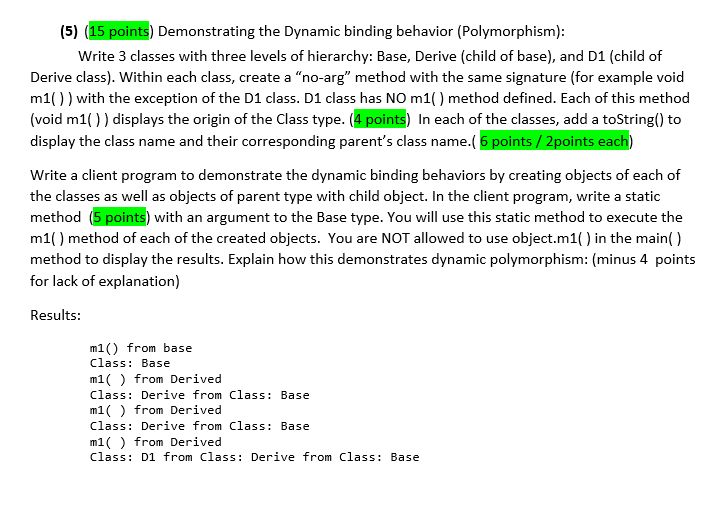Answered step by step
Verified Expert Solution
Question
1 Approved Answer
(5) (15 points) Demonstrating the Dynamic binding behavior (Polymorphism): Write 3 classes with three levels of hierarchy: Base, Derive (child of base), and D1 (child

Step by Step Solution
There are 3 Steps involved in it
Step: 1

Get Instant Access to Expert-Tailored Solutions
See step-by-step solutions with expert insights and AI powered tools for academic success
Step: 2

Step: 3

Ace Your Homework with AI
Get the answers you need in no time with our AI-driven, step-by-step assistance
Get Started


